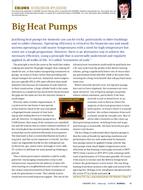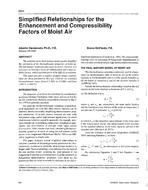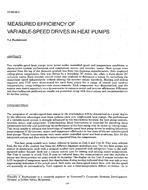A digital computer simulation was used to compare the energy consumption and comfort of an electric baseboard heating system using high performance thermostats (low droop, fast cycling) to that of the same system using poorer performing thermostats (high droop, slow cycling, such as many line voltage types). Since a thermostat which allows the controlled temperature to fall below the setpoint will obviously cause less energy consumption than a thermostat which maintains the controlled temperature closer to the setpoint, the key hypothesis of this study was that the user will reset the thermostat setpoint in some fashion during the heating season to obtain acceptable conditions for all heating loads. The major assumption of this study, therefore, was the mode of this "user-thermostat interaction".
For every case in which the simulated "user" could intervene, the energy consumption using high performance thermostats was found to be less, while a greater degree of comfort was maintained, than systems using poorer performing thermostats. Energy savings ranged from 2% to 18% depending upon the mode of user interaction simulated. Where energy savings were small, the "user" was resetting the poorly performing thermostat as often as twice a day; i.e., the "user" was performing the function of a better performing thermostat.
Citation: Symposium, ASHRAE Transactions, Volume 88, Part 1, Houston, TX
Product Details
- Published:
- 1982
- Number of Pages:
- 13
- File Size:
- 1 file , 820 KB
- Product Code(s):
- D-HO-82-09-1


